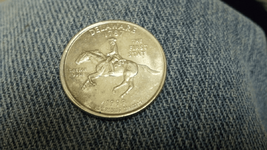Well I found a 1999 Delaware P Quarter and it has the error but the E where The First Stat'E' is almost completely gone. So far out of all the errors I've looked at they all have at least the whole outline of it. Is it worked? Or has anyone seen others without the E?
Upvote
0






